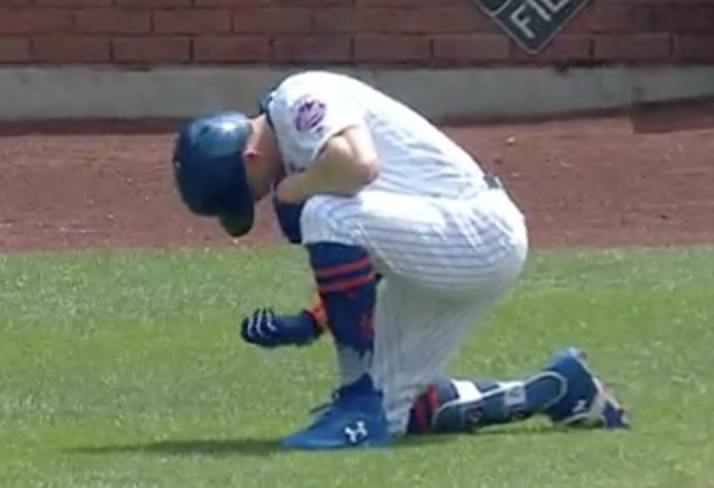HBP and ROE stats are through July 28, situational batting stats through July 29.
During the Mets’ nearly unbeatable start to the season, I wrote about how the team’s pitching staff contributed, in part, by ensuring opposing runners who reached base rarely scored. Since then, the pitching has split between generally successful starts (a 3.74 starting pitcher DRA, good for sixth in baseball) and inconsistent relief appearances (a 4.95 relief DRA, 23rd overall) (note: the two DRAs are accurate through July 26); the difference between relief DRA and starter DRA is the highest amongst all teams. The focus on leads evaporating at the end of games, however, is as much about the end result themselves as it is that it seems like Mets starters rarely leave with the lead at all – during Saturday’s game, for instance, the broadcast revealed a disheartening stat that helped explain how a 1.82 ERA and 5-6 record could coexist.
Keith Hernandez: "Sometimes our truck will put this stuff up and it's just depressing." pic.twitter.com/YunAZFmC1Q
— Kate Feldman (@kateefeldman) July 29, 2018
A week prior to Saturday, Brandon Nimmo tied and broke the Mets’ single-season hit-by-pitch record previously held by Lucas Duda’s 2015 season at 14. What intrigued me about his breaking the record was not so much the HBP itself, but how the team’s offense responded. In addition to that, I decided to look at times reached on error, as well; both events, in some way, represent additional chances for the offense to score. For each statistic, the MLB average is 41 and 35, respectively, and the Mets are at 41 and 35 themselves.
Differing slightly from the way run expectancy is understood, I looked solely at what happened between the time a player was hit by the pitch or reached on an error and when they got out or scored. These 76 initial events, then, led to 169 scenarios; for example, Nimmo’s record-tying HBP led to baserunners on first and second with two outs and, as Asdrubal Cabrera subsequently struck out, was only associated with that one. The record-breaking one, occurring later in the same game, continued to keep the bases loaded with no outs, and then, following Devin Mesoraco’s double-play groundout, had a runner on third with two outs; both were counted for this article’s purposes.
This methodology was used because of the focus on the player reaching base via HBP or ROE – the situations are of interest for the purposes of seeing how a baserunner that might otherwise not have been there affects the offense for the time they’re on base. The following tables reflect the baserunning situations taking place across this time frame this season (e.g., column “12” row “2” means runners on first and second with two outs) and the number of runs scored from each situation during said time frame.
With runners on base over the whole season, the Mets have scored 13.2% of those who were on during a given plate appearance. While the percentage of runs scored over the number of baserunning situations I checked is higher than the aforementioned number, it’s clear that the Mets are overperforming in situations where few runs are to be had – they’re more likely to score a runner from first than one in scoring position.
Similarly, moving said runners into scoring position is an area where the team can improve. Though they outpace the league average in productive out opportunities slightly (366 to 363), they’re seventh-worst in actually producing a productive out. These three aspects work to characterize the offensive struggles as a whole: a failure to capitalize upon additional baserunners via moving them into scoring position and then being unable to drive them in if they were moved.
This won’t fix the entire problem, but with just a 10-19 record in one-run games, additional runs at the right time could have changed the season’s narrative completely. It’s not that they’ve been without chances to add said runs, but optimal situations (say, runners on first and second or bases loaded with less than two outs) have failed to turn into runs time and again. The benefit of an HBP or ROE is that you could view it as giving yourself yet another chance to score. What the Mets have found this season, however, is the opposite side of that mindset: that you missed an opportunity you didn’t even think you’d have in the first place.


